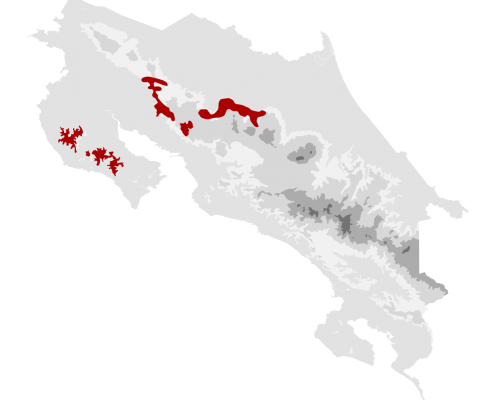Friday December 8, 2023.
Coffee Harvest Season Unfolds in Guanacaste
Costa Rica is a wonderful place for coffee enthusiasts, with over eighty percent of its eight coffee regions are situated between 800 and 1,600 meters (or 2,600 and 5,300 feet) above sea level. Those versed in the art of coffee cultivation will know these numbers mean great coffee flavor. There is one basic principle of elevation and coffee: The higher the elevation, the better the coffee. As most of the coffee harvesting in Costa Rica occurs between December and March, the much-anticipated season is now upon us in Guanacaste. It is the perfect time to immerse yourself, particularly the varieties produced in the Las Catalinas region, Guanacaste.

The Influence of Guanacaste Climate on Flavor Profile
Guanacaste experiences two well-defined seasons, marked by a dry period and a rainy spell, except in Sarapiquí and San Carlos, where the rainy season may extend, but with reduced intensity during the summer. The average annual rainfall hovers around 2,100 millimeters (about 6.89 ft), and the weather is consistently warm, with temperatures reaching over 30 °C. Elevated temperatures and a dry climate result in a bean that requires a long, low roast. This results in brewed coffee that is characterized by a soft, full-bodied texture with subtle acidity, accentuated by well-defined salty and bitter notes. Approximately 85% of plantations established in high-temperature areas like Guanacaste are planted under forest shade, mainly of Erythrina or Poro, Musaceae, Inga or Guaba trees. This production style is considered a sustainable form of coffee growing.
Guanacaste's landscape is adorned with several volcanoes, and volcanic soil offers excellent drainage capabilities, allowing coffee plants to thrive without being waterlogged. This unique soil ensures optimal root health and prevents the risk of over-hydration. Additionally, the porous nature of volcanic soil facilitates the circulation of air and moisture, creating a favorable microclimate for the coffee plants. The mineral-rich composition of volcanic soil imparts distinctive characteristics to coffee beans as these minerals are absorbed by the roots. The final cup of coffee has hints of chocolate, fruity notes, and a subtle acidity.
The coffee plantations gracing the Guanacaste region are strategically cultivated in andisols soils of volcanic origin, renowned for their remarkable fertility and impeccable structure. Sarapiquí and San Carlos coffee plantations find their home in inceptisols soils within the middle and upper areas, and ultisols in the lower regions. As is the norm in other coffee-producing areas, the Arabica species takes center stage, with predominant cultivation of the Caturra and Catuaí varieties.

Costa Rican coffee distinguishes itself with outstanding quality and a dedicated commitment to environmental stewardship. Indulging in a cup of this exceptional coffee becomes an exploration of the nation's rich coffee heritage, including in regions like Guanacaste. If you are looking for a place in town to savor quality coffee and appreciate the scenic views of Las Catalinas, consider visiting hotspots such as Pura Vida Ride, Center of Joy, Pots and Bowls, Cuatro Calle La Ronda, Coquelicot, and Sentido Norte to enhance your coffee experience.